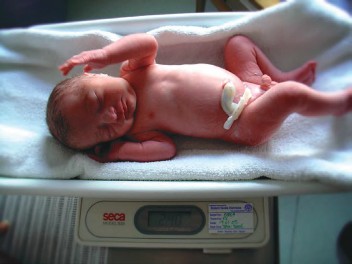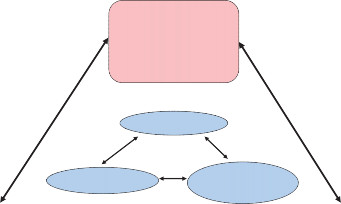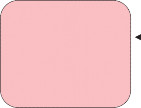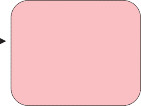Fundamentals of Midwifery: A Textbook for Students (85 page)
Read Fundamentals of Midwifery: A Textbook for Students Online
Authors: Louise Lewis

BOOK: Fundamentals of Midwifery: A Textbook for Students
4.54Mb size Format: txt, pdf, ePub
Figure 9.4
Illustrates finger insertion to examine for cleft palate. Source: Chapman and Charles 2013, Figure 5.3, p. 94. Reproduced with permission of John Wiley & Sons.
 Figure 9.5
Figure 9.5
Newborn being weighed. Source: Chapman and Charles 2013, Figure 5.2, p. 90. Reproduced with permission of John Wiley & Sons.these factors will are closely linked to the overall health of the baby. A cold baby will use up energy trying to keep warm; this will burn up the limited energy stores causing low blood sugars (hypoglycaemia) and will also increase oxygen demand which therefore increases respiratory rate. The increased respiratory rate will also increase energy demand and lower blood sugars even further and the lack of available energy to burn will reduce temperature further making the baby significantly hypothermic, hypoglycaemic and demonstrating signs of respiratory distress includ- ing cyanosis. As shown in Figure 9.6, the cycle can start at any point as the interactions between temperature, blood sugar and respiratory effort work in both directions.
 WARM
WARM
Reduce heat loss (see Table 9.3)
Hypothermia
Hypoglycaemia
Respiratory
Distress
 197
197

 SWEET
SWEET
Support and monitor feeding (See Chapter 10)
PINK
Observe colour and respiratory effort (see Table 9.1)
Figure 9.6
The relationship between temperature, blood sugar and respiratory function.Infant feeding is addressed in Chapter 10; therefore the focus here is in keeping the baby at an appropriate temperature and the recognition of respiratory symptoms.WHO (1997) recommend that the normal temperature of an infant in the first few days of life should be between 36.5 and 37.5°C; however since good practice requires neonatal tempera- tures to be taken under the axilla, slightly lower temperatures are acceptable. NICE (2006) rec- ommend the normal temperature for a baby should be around 37°C. A baby with cool skin, pallor and any increase in respiratory rate and/or grunting should have his/her temperature checked. Newborn babies are at risk of heat loss because they have a relatively high surface area in comparison with their weight; however the risk of chilling can be reduced by under- standing how heat is lost (see Table 9.3).At rest the newborn respiratory rate is around 30–40 breaths per minute (England 2010a) Normal respiration should be easy and relatively quiet.It is important that midwives should be able to recognise abnormal breathing behaviour in order that early intervention minimises further deterioration (see Box 9.1).Postnatal care of the baby should therefore be to ensure that feeding is established and the baby is in a suitably warm, draught free environment. Regular checks of wellbeing should be made to monitor colour and breathing. Parents should be provided with advice and guidance with regard to the right environment for the baby at home (too hot is also detrimental to well- being) and about reporting any concerns regarding breathing and feeding to their midwife and/ or General Practitioner.
Skin care and hygiene of the newborn
There has been much debate over the years regarding bathing and general skin care in relationto neonates. Bathing the baby as soon as possible after delivery was thought to reduce the risk
Table 9.3
Mechanisms of heat loss in newborn infants
 Mechanism
Mechanism
Description
Prevention
Evaporation
Occurs when the baby is wet and the water on the skin is converted to vapour on contact with the air with associated loss of heat
Drying the baby at delivery and wrapping in warm towels.
Similarly if the baby is bathed prompt drying and dressing will reduce heat loss.
Conduction
Heat is lost by contact with a cooler surface.
Weighing scales, resuscitaires and hands should be warmed before coming into contact with the baby.
Convection
Heat is lost due to movement of air over the surface of the skin.
Doors and windows should be closed and draughts avoided.
Radiation
Heat is lost from the exposed skin of the baby to surrounding cooler surfaces.
Ensure the baby is not placed near cooler surfaces such as windows.
198
 Box 9.1 Symptoms of respiratory distress
Box 9.1 Symptoms of respiratory distress
Illustrates finger insertion to examine for cleft palate. Source: Chapman and Charles 2013, Figure 5.3, p. 94. Reproduced with permission of John Wiley & Sons.
 Figure 9.5
Figure 9.5Newborn being weighed. Source: Chapman and Charles 2013, Figure 5.2, p. 90. Reproduced with permission of John Wiley & Sons.these factors will are closely linked to the overall health of the baby. A cold baby will use up energy trying to keep warm; this will burn up the limited energy stores causing low blood sugars (hypoglycaemia) and will also increase oxygen demand which therefore increases respiratory rate. The increased respiratory rate will also increase energy demand and lower blood sugars even further and the lack of available energy to burn will reduce temperature further making the baby significantly hypothermic, hypoglycaemic and demonstrating signs of respiratory distress includ- ing cyanosis. As shown in Figure 9.6, the cycle can start at any point as the interactions between temperature, blood sugar and respiratory effort work in both directions.
 WARM
WARMReduce heat loss (see Table 9.3)
Hypothermia
Hypoglycaemia
Respiratory
Distress
 197
197
 SWEET
SWEETSupport and monitor feeding (See Chapter 10)
PINK
Observe colour and respiratory effort (see Table 9.1)
Figure 9.6
The relationship between temperature, blood sugar and respiratory function.Infant feeding is addressed in Chapter 10; therefore the focus here is in keeping the baby at an appropriate temperature and the recognition of respiratory symptoms.WHO (1997) recommend that the normal temperature of an infant in the first few days of life should be between 36.5 and 37.5°C; however since good practice requires neonatal tempera- tures to be taken under the axilla, slightly lower temperatures are acceptable. NICE (2006) rec- ommend the normal temperature for a baby should be around 37°C. A baby with cool skin, pallor and any increase in respiratory rate and/or grunting should have his/her temperature checked. Newborn babies are at risk of heat loss because they have a relatively high surface area in comparison with their weight; however the risk of chilling can be reduced by under- standing how heat is lost (see Table 9.3).At rest the newborn respiratory rate is around 30–40 breaths per minute (England 2010a) Normal respiration should be easy and relatively quiet.It is important that midwives should be able to recognise abnormal breathing behaviour in order that early intervention minimises further deterioration (see Box 9.1).Postnatal care of the baby should therefore be to ensure that feeding is established and the baby is in a suitably warm, draught free environment. Regular checks of wellbeing should be made to monitor colour and breathing. Parents should be provided with advice and guidance with regard to the right environment for the baby at home (too hot is also detrimental to well- being) and about reporting any concerns regarding breathing and feeding to their midwife and/ or General Practitioner.
Skin care and hygiene of the newborn
There has been much debate over the years regarding bathing and general skin care in relationto neonates. Bathing the baby as soon as possible after delivery was thought to reduce the risk
Table 9.3
Mechanisms of heat loss in newborn infants
 Mechanism
MechanismDescription
Prevention
Evaporation
Occurs when the baby is wet and the water on the skin is converted to vapour on contact with the air with associated loss of heat
Drying the baby at delivery and wrapping in warm towels.
Similarly if the baby is bathed prompt drying and dressing will reduce heat loss.
Conduction
Heat is lost by contact with a cooler surface.
Weighing scales, resuscitaires and hands should be warmed before coming into contact with the baby.
Convection
Heat is lost due to movement of air over the surface of the skin.
Doors and windows should be closed and draughts avoided.
Radiation
Heat is lost from the exposed skin of the baby to surrounding cooler surfaces.
Ensure the baby is not placed near cooler surfaces such as windows.
198
 Box 9.1 Symptoms of respiratory distress
Box 9.1 Symptoms of respiratory distressTachypnoea – respiratory rate higher than 40 breaths per minute usually 60 or above.
Nasal flaring – as the baby tries to draw more air in to meet its increasing needs there is flaringof the nostrils.
Recession – the extra effort made to increase respiratory rate and air entry causes recession of the intercostals muscles.
Grunting – this is an expiratory sound made by breathing against a closed glottis.
Poor colour – this may be demonstrated by mottling, central cyanosis or pallor.
of infection, particularly that due to blood-borne pathogens such as HIV, and the use of prod- ucts such as baby powder was commonplace. A better understanding of neonatal skin and infection has changed practice, particularly in respect of immediately after birth, but there is still debate about the use of bathing and skin care products (Hale 2007).
Newborn skin is thinner than adult skin and is more prone to irritation or allergic reactions. As skin is a significant part of the infant’s limited immune system it is vital that it is protected as much as possible. However, there is only limited evidence in relation to whether the use of bathing and skin care products disrupt the function and/or integrity of the skin, and parental choice has to be a factor in decision-making (Hale 2007; Hughes 2011). WHO (2006) recommend that the newborn baby is not bathed for at least six hours following birth and that any vernix is not removed as it has antiseptic as well as moisturising properties. NICE (2006) recommends that infants are bathed in plain water only, but some authors (Walters et al. 2008; Blume-Peytavi et al. 2009) suggest that plain water is inadequate for ensuring cleansing of the nappy area and that the high mineral content of some tap water may cause irritation. Steen and Macdonald (2008) suggest that parents may want to use skin cleansers because they believe they are more effective and due to the influence of gifts and free samples. It is important therefore that parents are provided with as much advice as possible with regard to their choice of skin products for their baby. Box 9.2 summarises some of the guidance around newborn skin care.
Other books
A Marriage In Wyoming (The Marshall Brothers 3) by Lynnette Kent
IK3 by t
To Try Men's Souls - George Washington 1 by Newt Gingrich, William R. Forstchen, Albert S. Hanser
Do Not Go Gentle by James W. Jorgensen
Scar Tissue by Judith Cutler
La hija de la casa Baenre by Elaine Cunningham
To Love by Dori Lavelle
Betrayed by Your Kiss by Laura Landon
Cold Calls by Charles Benoit
Marriage to the Second Degree - Part 1 by Kendra Thomas